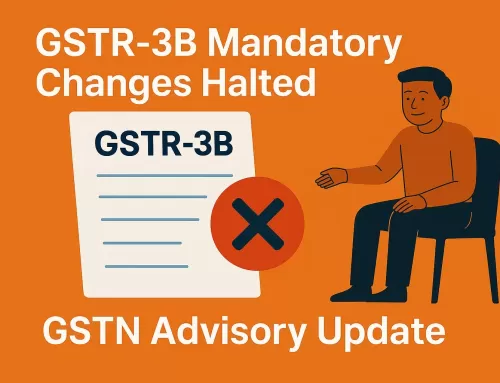Mandatory Sequential Filing of GSTR-7 Returns: Important Advisory
Introduction:
The GST Network (GSTN) has issued an advisory regarding the mandatory sequential filing of GSTR-7 returns, effective from November 1, 2024. This change follows Notification No. 17/2024-Central Tax, dated September 27, 2024. Here’s what taxpayers need to know about the new filing requirements.
GSTR-7 is a return form for Tax Deducted at Source (TDS) under GST, which must be filed by entities deducting tax at the source. It includes details of TDS deducted, TDS liability payable, and paid, along with any refund claimed.
Key Points:
- Sequential Filing Requirement: As per Notification No. 17/2024-Central Tax, GSTR-7 returns must be filed sequentially from the October 2024 tax period onwards. This means that returns must be filed in chronological order, starting with the return period of October 2024.
- Nil Returns: For any month in which no deductions have been made, deductors are required to file a Nil return for that month.
- Clarification on FAQs: Multiple tickets have been received regarding the sequential filing of GSTR-7 returns. Some taxpayers referenced FAQs stating that sequential filing is not mandatory. This advisory clarifies that sequential filing is now mandatory as per the latest notification.
Implications for Businesses:
- Compliance: It is crucial for businesses to comply with the new sequential filing requirement to avoid penalties and ensure smooth operations.
- System Updates: Businesses may need to update their accounting and filing systems to accommodate the new sequential filing process.
Non-compliance with GSTR-7, which is the return for Tax Deducted at Source (TDS) under GST, can have significant implications for both the deductor and the deductee:
For the Deductor:
- Late Fees and Penalties:
- A late fee of ₹200 per day (₹100 each under CGST and SGST) is applicable for delayed filing, subject to a maximum of ₹5,000
- Interest at the rate of 18% per annum is charged on the amount of TDS not deposited on time
- Legal Consequences:
- Persistent non-compliance can lead to further legal actions, including the possibility of prosecution under GST laws
- Impact on Compliance Rating:
- Non-compliance affects the deductor’s GST compliance rating, which can impact their business reputation and relationships with suppliers and customers
For the Deductee:
- Delay in Claiming Input Tax Credit (ITC):
- If the deductor fails to file GSTR-7 on time, the deductee cannot claim the TDS as ITC, which can affect their cash flow and tax liabilities
- Mismatch in Returns:
- Non-compliance by the deductor can lead to mismatches in the deductee’s returns, potentially triggering audits or scrutiny from tax authorities
- Financial Impact:
- The inability to claim ITC on time can lead to higher working capital requirements and financial strain for the deductee
Action Points for Businesses:
- Review Filing Process: Ensure that your GSTR-7 returns are filed in chronological order, starting with October 2024.
- File Nil Returns: If no deductions were made in a particular month, file a Nil return for that month.
- Seek Assistance: If you encounter any issues or need further assistance, contact the GSTN helpdesk for support.
Conclusion:
Staying compliant with GST regulations is essential for smooth business operations. This advisory provides clear guidance on the mandatory sequential filing of GSTR-7 returns. Our TaxPower GST software is equipped with the functionality of GSTR-7. TaxPower GST Software simplifies this process by offering features like automated data import, error-free filing, and single-click GSTIN validation. With TaxPower, businesses can ensure seamless compliance with GSTR-7, avoiding any potential penalties and maintaining a smooth workflow
Blog Ref: GSTN Government Site




